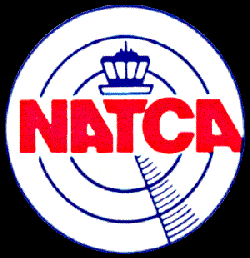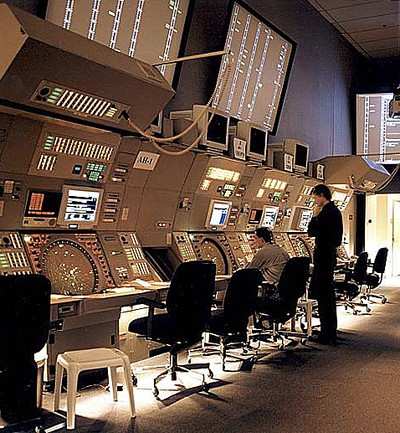Say Flights Should Have Been Controlled By Closed TRACON
 Editor's Note: Below is the
unedited text of a release from the National Air Traffic
Controllers Association, regarding two fatal accidents in Indiana
this year... and the union's belief that FAA policies may have
played a role in those accidents.
Editor's Note: Below is the
unedited text of a release from the National Air Traffic
Controllers Association, regarding two fatal accidents in Indiana
this year... and the union's belief that FAA policies may have
played a role in those accidents.
The crash last month of a twin-engine plane, on approach to the
Mid-American Air Center in Lawrenceville, Ill., was the second
fatal plane crash in Indiana this year in which local approach
controllers in Terre Haute, Ind., should have been guiding the
aircraft, but instead, the Federal Aviation Administration switched
control to Indianapolis Air Route Traffic Control Center because
the Terre Haute Terminal Radar Approach Control (TRACON) was closed
for the night.
Indiana air traffic controllers, after having fully reviewed the
circumstances of both incidents, today expressed their deep
frustration and concern over their belief that they represent the
worst-case scenario that has emerged because of the FAA's decision
to transfer control away from the appropriate TRACON, to the
center, and thus has degraded the margin of safety. They believe
this accident, and the accident earlier this year at the
Bloomington, Ind., airport, which led to the deaths of five IU
graduate students, were the result of the reduced quality of air
traffic services available to the pilots due to FAA financial
decisions in closing Terre Haute Approach Control at night.
"The FAA has allowed the staffing level at Terre Haute to be
significantly reduced," said Laurie Krumwiede, local facility
representative for the National Air Traffic Controllers Association
at the Terre Haute Tower and TRACON. "A few years ago we had 19
fully certified controllers and three trainees. Today Terre Haute
is staffed with only 13 fully certified controllers. As a result,
FAA management said it couldn't support a recent agency decision
that requires it to have two controllers staff the midnight shift
(10 p.m. to 6 a.m.). Instead, in February, the FAA started turning
over the approach control portion of the operation to Indy Center
during the midnight hours while one controller at Terre Haute Tower
worked the airport operations during these hours."
Said Dave O'Malley, local NATCA facility representative at Indy
Center: "The controllers at Indy Center are among the best and most
dedicated in the world. However, we don’t have the radar
accuracy or experience with local approach operations that the
controllers at Terre Haute have. On top of that, center controllers
don’t receive the kind of extensive training for approach
operations that true approach controllers receive.
In fact, a recently retired Indy Center controller said he
received updated training materials on approach operations which
were intended to bring him up to speed on conducting such
operations. This consisted of approximately 45 minutes in front of
a computer work station, reading about procedures and phraseology.
“This was no comparison whatsoever to the extensive,
on-the-job training and years of experience provided to approach
controllers for working these operations at this most critical time
of flight,” O’Malley said. “Terre Haute
controllers have over 25 years experience providing radar services
to these local airports."
The transfer of Terre Haute's TRACON to Indy Center is also a
poor allocation of resources, NATCA believes, because the
controllers at Indy Center are very busy during the mid-shift hours
with freight traffic. Requiring a center controller to also provide
approach control services during these times will result in
degraded service to one user or another.
"That’s why our system of delegated responsibilities and
redundancies and our division of labor was developed and has been
the world’s safest and best," said NATCA Great Lakes Regional
Vice President Bryan Zilonis. “Unfortunately, given the FAA's
current philosophy of cutting costs by reducing controller staffing
levels, consolidating services, and not making overtime available
where staffing shortages exist, we are seeing the system become
unsafe and we fear we will see more lives lost."
Continued Zilonis: "We have looked at the information from both
accidents, at Bloomington and Lawrenceville, that we got from
active controllers. And we have reached the conclusion that the
absence of an experienced approach controller at Terre Haute TRACON
working these flights definitely had an impact on these events,"
Zilonis said.

NATCA believes the safest, quickest and simplest solution to
this situation is to return responsibility for this airspace to the
controllers at Terre Haute. "This is where such responsibilities
belong and is the reason this facility was established," Krumwiede
said. "They are easily the best qualified to provide these critical
services. However, additional staffing is desperately needed as
most daytime and evening shifts are staffed below our minimum
staffing level."
 ANN's Daily Aero-Linx (05.06.25)
ANN's Daily Aero-Linx (05.06.25) ANN's Daily Aero-Term (05.06.25): Ultrahigh Frequency (UHF)
ANN's Daily Aero-Term (05.06.25): Ultrahigh Frequency (UHF) ANN FAQ: Q&A 101
ANN FAQ: Q&A 101 Classic Aero-TV: Virtual Reality Painting--PPG Leverages Technology for Training
Classic Aero-TV: Virtual Reality Painting--PPG Leverages Technology for Training Airborne 05.02.25: Joby Crewed Milestone, Diamond Club, Canadian Pilot Insurance
Airborne 05.02.25: Joby Crewed Milestone, Diamond Club, Canadian Pilot Insurance




